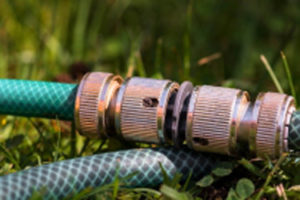
The Teflon surface is versatile, and unrivalled if protected by a wire sheet or some other paper. Just two classes of compounds such as sodium, potassium and fluoro chemically derived liquid alkaline elements, such as trifluoride chlorine, oxygen difluoride and fluorine are known to be risks to Teflon. Let us help you know all about Teflon hoses.
Teflon Hose Construction
The origin of extruding Teflon plastic, fluoroethylene (poly tetra), utilizes state-of-the-art DuPont resins and provides the best tolerance. To obtain a relatively low fitting resistance electric charging grid, the precisely controlled amount of black carbon added at the 15 % inner centre of the panel.
The Teflon smoothbore shell should be used at high atmospheric pressure (up to 100 bar). The outer braid of stainless steel may be used. The temperature varies from -70 ° C to 250 ° C. Available in AS version, an antistatic Teflon liner which prevents electrostatic charges from accumulating. It is used in numerous industrial applications as full fittings crimped with ferrules.
Smoothbore braided Teflon hoses
Hyperline SB
The AISI 304 stainless steel material is used In the manufacturing of Teflon smoothbore.
Braided Teflon hose
Superior, versatile Teflon pins are collected from sturdy steel, polypropylene or Kevlar tapestry from an exterior Teflon tubing board. These are accessible as an AS variant of an antistatic Teflon layer to eliminate electrostatic charges accumulation. They may be used for different industrial applications as full hose connections with fittings cremated by ferrules.
Hyperline V
They are Assembled with a unique configuration for Teflon hose or standard hydraulic machinery.
Pharmaline N
The silicone coating has a reasonable degree of grooming. It is known to be professionally tailored Teflon hoses.
Pharmaline X
Pharmaline N braid-free shaft version with original silicone cover is for low-pressure application.
Maintenance of Teflon hose
The Teflon hose is rarely used for pressurized or pneumatic daily systems and is prone to harsh conditions of assembly. There are a few common mistakes here to pick the best jeans to avoid them. Two levels of twisted artworks are referred to as “T.”
Hoses made from a Teflon centre perform remarkably well under severe conditions. That’s why the aircraft, the flight equipment and the stops are placed and the individual firefighters rely on their insurance.
In applications where the following highlights are necessary or characterized, the Teflon hose may be the right decision:
- Hot and cold tolerance
- non-toxic quality
- Extremely low permeability
- The easy job of sterilization and washing
- obfuscation of Uv / ozone
The pipe may also include silicon, thermoplastics or fabrics, if appropriate. Hoses made with Teflon can neither be distorted nor be damaged when they bear the planned bending radii and loads.
Benefits from the application of a Teflon hose
Teflon’s non-stick Quality is reliable. The high amount of stress contributes to pressure reduction. The flow levels are always high throughout the lifespan of the shoes. The friction coefficient of Teflon typically varies from 0.05 to 0.02. The nature of Teflon is oleophilic and hydrophobic. The Teflon hose doesn’t contain heat, and it is suitable for low dew point pneumatic systems.
Conclusion
Teflon hose performs under harsh situations with continuous cracking and moving leading to cracking instability without collapsing. For specific shaft constructions, variable flexes urge and vibration demands meet. The Teflon hose does not change their features with age. They are trustworthy in all environmental conditions.


Leave a Reply